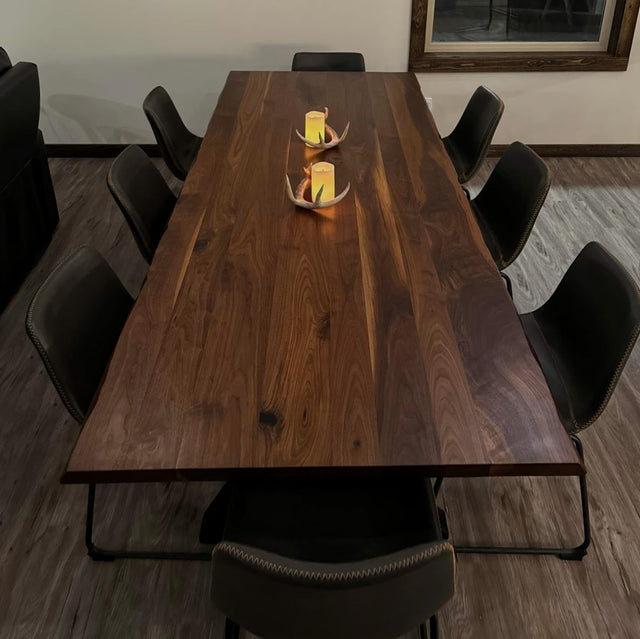What to Do if Your Custom Wood Furniture Gets Damaged: Repair vs. Replace
Custom wood furniture is an investment, a reflection of your taste, and often a piece that carries sentimental value. But what happens when it gets damaged? Whether it’s a deep scratch, a crack, or warping from environmental conditions, you’re left with a tough decision: Should you repair it or replace it?
This topic is often debated among homeowners, designers, and woodworkers alike. As someone passionate about quality craftsmanship, I want to dive into both sides of the discussion to help you make the best decision for your home.
The Case for Repairing Your Custom Wood Furniture
First and foremost, custom wood furniture is designed to last. Solid wood is durable, and the beauty of it lies in its ability to be restored, sanded, polished, and fixed. Here’s why repairing should always be considered:
1. The Longevity of Solid Wood
Solid wood, especially hardwood like walnut, maple, and oak, is incredibly resilient. Minor damage, such as surface scratches, can often be sanded down and re-finished without losing the piece’s integrity. Even more serious issues, like cracks or water damage, can often be addressed by a professional woodworker.
Opinion: If you’re dealing with minor to moderate damage, repair is almost always the better option. Not only is it more sustainable (why throw away a perfectly good piece of furniture?), but it can also save you money in the long run.
2. Sentimental Value
Many custom wood furniture pieces hold sentimental value—they might have been crafted specifically for your home, passed down through family, or created to celebrate a special occasion. Repairing allows you to preserve that emotional connection.
Opinion: Replacing furniture that has sentimental value just because of a few scratches can feel like erasing memories. Instead, restoring it keeps the story alive in your home.
3. The Environmental Impact
Throwing out wood furniture contributes to unnecessary waste, especially when it’s custom-made. Repairing is not only a practical choice but an environmentally responsible one. By opting for repairs, you’re reducing your environmental footprint and making a more sustainable decision.
Opinion: We should be thinking about the environmental cost of replacing damaged furniture, especially when it can be repaired with minimal effort.
When Replacement Might Be the Better Option
While repair is often the preferred route, there are some cases where replacement makes more sense. Here’s why:
1. Extensive Structural Damage
If the structural integrity of the piece is compromised—like if the wood is completely split, rotten, or beyond repair—replacing might be the only feasible option. Repairing extensive damage can sometimes cost more than simply having a new piece made, especially if it involves intricate craftsmanship.
Opinion: If the cost of repair rivals or exceeds the cost of replacement, it might be time to let go and replace the piece. However, consult a professional before making any decisions.
2. Updating Your Space
Furniture trends change, and sometimes your custom wood piece, while still beautiful, no longer fits your home’s aesthetic. In this case, replacing it might be a better option to ensure your home remains cohesive in style.
Opinion: Replacing furniture to match a new aesthetic is a personal choice, but if your current piece no longer brings joy or harmony to your space, replacing it could help refresh your home.
3. Budget Considerations
Sometimes, it’s a matter of practicality. Custom wood furniture can be expensive to repair if it’s heavily damaged. In some cases, replacing the piece with a new custom piece could make more financial sense, especially if you can’t find a professional to do the job at a reasonable cost.
Opinion: If you’re on a tight budget, don’t be afraid to weigh the financial pros and cons of repair versus replacement.
What Should You Do? My Final Take
In my opinion, the decision to repair or replace comes down to a few key factors: the extent of the damage, the emotional value of the piece, and your budget. If the damage is minor and the piece holds sentimental or financial value, repair is often the best choice. On the other hand, if the piece is structurally compromised or no longer serves your style or space, replacement might be a better option.
At the end of the day, it’s about finding balance between practicality and sentimentality. And if you’re unsure, reach out to a trusted woodworker—they’ll give you the best advice based on your specific situation.

